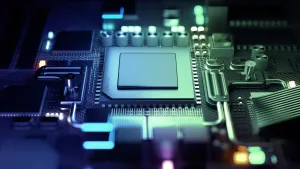The Revival of Systems Engineering
Embarking on a journey towards innovation is always an exciting prospect. The truth is we can’t predict the future. However, we can prepare for it. Systems Engineering is the key to guiding tomorrow’s innovations today. In the era of rapid technological evolution, systems engineering emerges as the keystone of groundbreaking advancements.
Often perceived as the bedrock of modern technological wonders, this discipline bridges gaps, facilitates integration, and ensures optimal performance. At Orthogone Technologies, we perceive systems engineering as amalgamating diverse technological realms, crafting solutions that meet today’s demands, and anticipating tomorrow’s challenges. But what makes systems engineering pivotal to developing and implementing these cutting-edge technologies?
Understanding Systems Engineering
Systems engineering is an interdisciplinary field that designs, integrates, and manages complex systems throughout their life cycles. These systems can be advanced spacecraft, telecommunication networks, and more. Systems engineering aims to ensure that all aspects of a system function harmoniously, meeting the needs of users and stakeholders.
Decoding the Building Blocks: Core Concepts
Integration Complexity: As we surge into the future, devices become more intertwined. This complex tapestry of interconnected mechanisms calls for flawless integration. From our perspective, it revolves around sculpting systems that communicate, comprehend, and operate in synchronicity.
Optimal Performance: It’s no longer just about making things work. In a world dominated by data and speed, achieving peak performance is paramount. Systems engineering optimizes these standards, assuring that every module, be it FPGA, IoT apparatuses, or LiDAR systems, exudes unparalleled efficiency.
Futureproofing: The acceleration of technological change mandates forward-thinking. System engineering plants its seeds in the soil of the present but ensures its roots are deep enough to support the technology trees of the future.
Implementing Systems Engineering in High-Tech Development:
- Holistic Approach:
- Systems engineering emphasizes a holistic approach, considering every facet of the system. This approach ensures that all individual components can function seamlessly when brought together. For high-tech innovations, this ensures that devices and software do not just operate in isolation but can integrate smoothly with other systems.
- Optimized Performance:
- Systems engineering ensures the final product is optimized for performance through iterative testing and refinement. This is crucial in high tech, where even minor inefficiencies can lead to significant losses or compromised functionalities.
- Risk Management:
- Systems engineering provides a structured methodology for identifying, analyzing, and mitigating risks. As high-tech solutions often function in critical applications, such as healthcare or aerospace, risk management becomes paramount to ensure safety and reliability.
- Scalability:
- A crucial feature for high-tech products is scalability. Systems engineering ensures that as technologies evolve and the demand grows, systems can be scaled up efficiently without compromising performance or integration.
Implementing Emerging Technologies:
As technology evolves, innovations emerge. Systems engineering allows for the seamless integration of these new technologies into existing systems, ensuring that high-tech solutions remain at the forefront of technological advancements.
- Improved Lifecycle Management:
- High-tech products often come with significant investments. Systems engineering ensures that these products have extended lifecycles, offering a better return on investment by focusing on maintenance, upgradation, and potential repurposing.
- Meeting Sustainable Goals:
- In a world increasingly focused on sustainability, systems engineering aids in developing high-tech solutions that align with the Sustainable Development Goals, ensuring a balance between innovation and responsibility.
- Enhanced User Experience:
- By considering the end-users during the design phase, systems engineering ensures that high-tech products are user-friendly, intuitive, and cater to the target audience’s needs.
Real-World Applications: Bridging Theory and Practice
Harnessing the prowess of systems engineering, several industries have already embarked on journeys of innovation:
- High-Tech:
- Take the example of FPGA (Field-Programmable Gate Array) technology. These adaptable silicon chips revolutionize the way we perceive adaptability in electronics. They lay the foundation for devices that can adapt and evolve post-manufacture, marking a significant shift from traditional static functionalities.
- Software:
- Systems engineering is pivotal in complex software ecosystems. Architectures, especially in the cloud domain, are increasingly reliant on robust system engineering principles to ensure scalability, resilience, and efficiency.
- Specific Industries:
- System engineering shapes precision in LiDAR (Light Detection and Ranging). These optical remote-sensing techniques, fundamental in realms like autonomous driving, demand a fusion of software and hardware, embodied perfectly by comprehensive systems engineering.
Conclusion: The Road Ahead for Systems Engineering
As the tapestry of technology becomes denser and more intricate, systems engineering will invariably be the needle weaving it together. It’s about envisioning the bigger picture, understanding interdependencies, and ensuring the symphony of tech components delivers a harmonious performance, bridging complex technological concepts and their real-world applications.
Dive into the essence of system engineering with Orthogone Technologies.
Contact us and envision the future through seamless integration, optimal performance, and forward-thinking strategies




